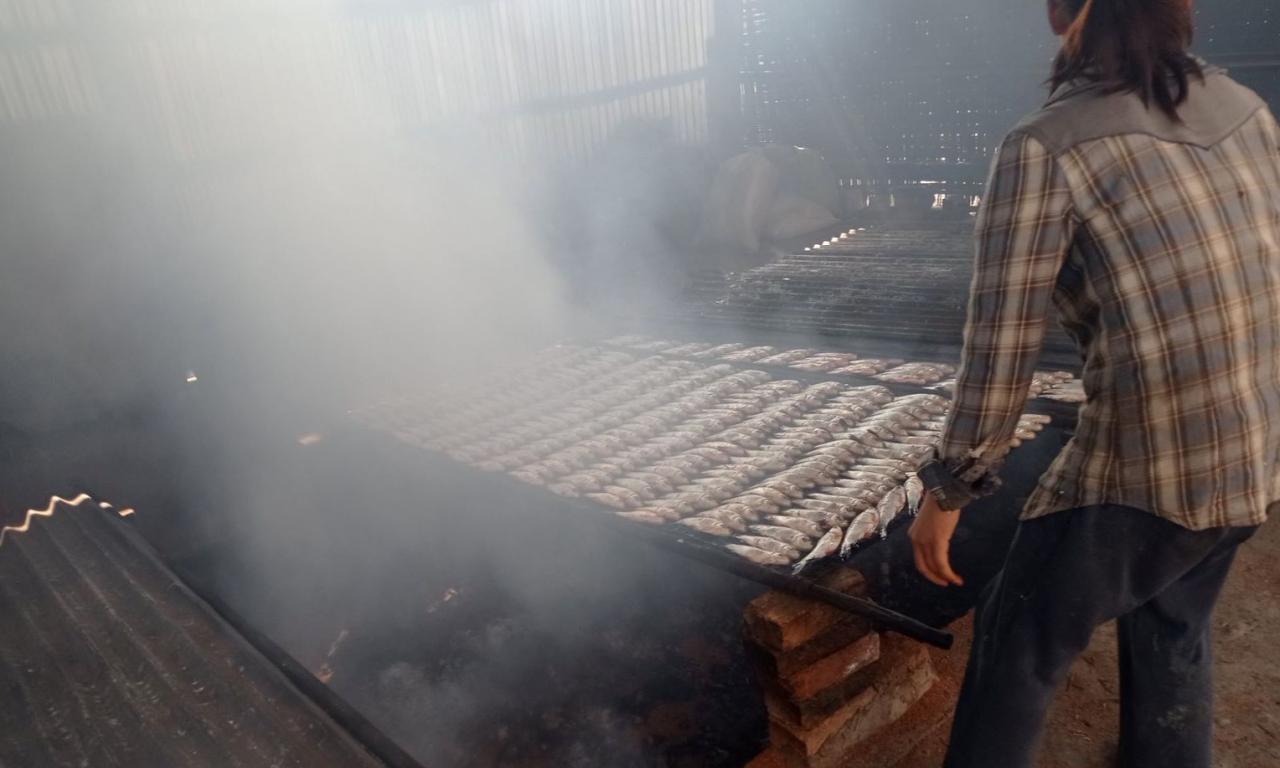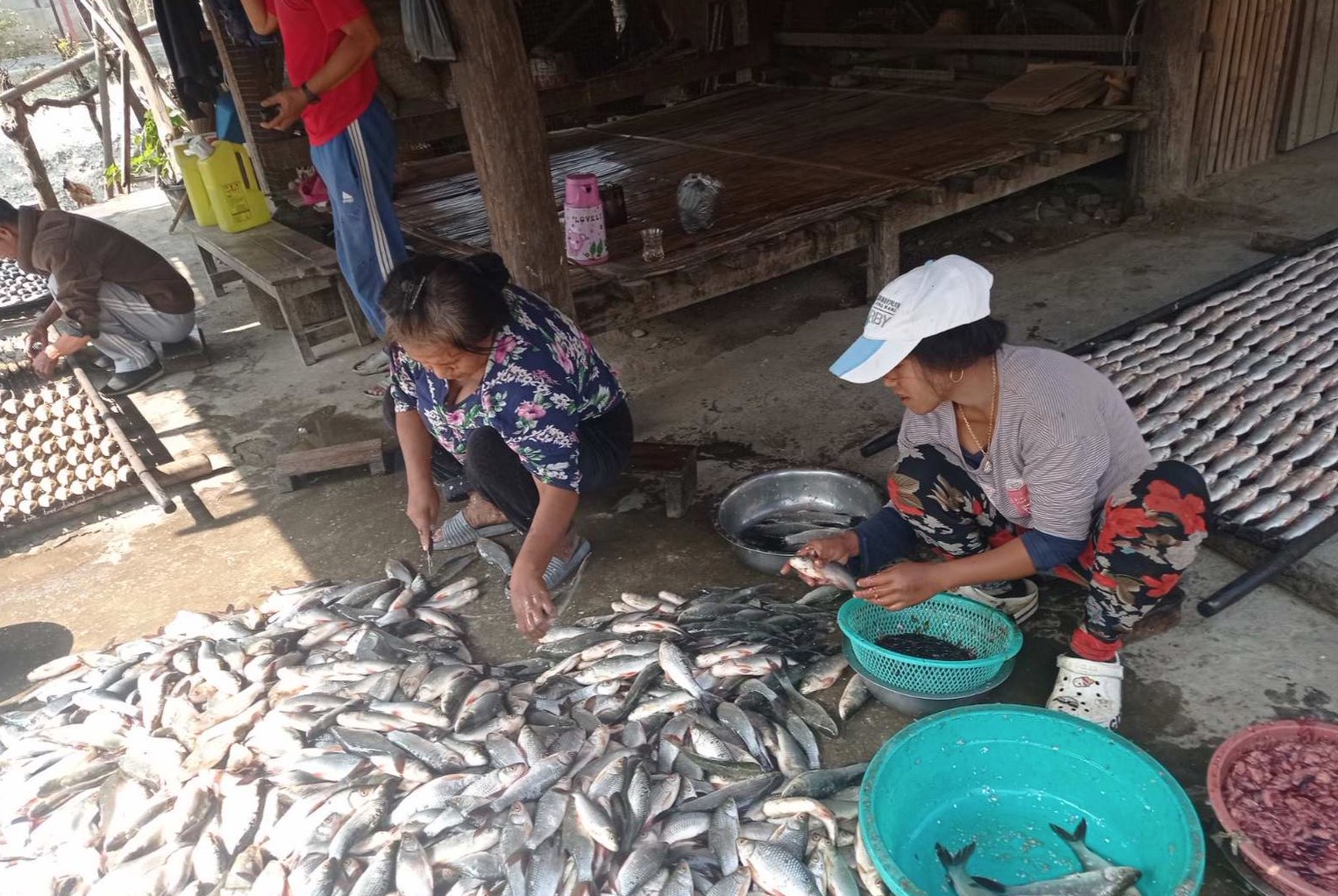
A pilot study determined a new fish smoking protype is cheaper and safer to operate for rural fish processors and produces fewer emissions.
Smoking, hot or cold, is a proven way to extend the shelf life of fish and add retail value. In many low- and middle- income countries, where cold storage is limited, smoking kilns help to preserve fish that would otherwise spoil and create a nutritious long-lasting product.
Traditional smoking kilns tend to be inefficient, costly to operate and labor-intensive. In response, new kiln technology was developed – the FAO-Thiaroye Processing Technique (FTT) – by the FAO in partnership with the National Training Centre for Fisheries and Aquaculture Technicians (CNFTPA) in Senegal. Originating in Africa, the technology has now spread through much of Southeast Asia.
Compare to traditional smoking kilns, the FTT was designed to reduce smoking time and the amount of fuel used. To ascertain the technology’s effectivity in Myanmar, the Myanmar Sustainable Aquaculture Programme (MYSAP), funded by the EU and BMZ, conducted a pilot study to compare fish smoked in traditional kilns with those smoked in FTT kilns.
Two fish processors in Myanmar’s Kale Township, Daw Vuli and U Lala, were supported in constructing FTT kilns and testing the quality of their smoked products. They were selected to participate in the pilot program as they were both seen as innovative and motivated to share what they learned with others.
Daw Vuli was particularly interested in differentiating her smoked rohu, a species of Indian major carp, from others and wanted to add value to her smoking process.
The trial results demonstrated the FTT smokers created products with a superior taste, as determined through sensory evaluations, had high outputs and produced significantly lower greenhouse gas emissions while exposing workers to less smoke.
Pilot study shows promising results

The introduction of FTT to rohu smokers in Kale Township was adapted to suit specific local conditions – the frame was modified with the insertion of a tin sheet to compensate for the unique mixture of wood and sawdust used as fuel in the township. The operating diagrams were also changed from metric to imperial units, with which the people in Myanmar were more familiar.
Test operation of the smokers was conducted under the virtual supervision of an international consultant, via the Viber mobile application, and a series of quantitative and qualitative tests were performed to compare the smoked products from the traditional kiln and FTT smoker.
For sensory tests, fish were prepared and smoked on the same day in both the traditional and the FTT smokers to allow direct comparison. Sensory parameters measuring taste/palpability were the biggest difference – the traditionally smoked fish received an average score of 3.25 compared to 4.45 for the FTT smoked fish, out of a possible five.
The FTT smoker was also found to use one-third the amount of fuelwood and sawdust as traditional kilns used; the smoking time was reduced from an average thirteen hours to seven hours using the improved FTT smoker; and the FTT smoker required less handling and was easier to operate than the traditional smoker.
Overall, the FTT smoker both improved product quality and consistency while reducing operational costs. It was estimated that the savings in wood and sawdust for fuel alone would pay back the construction costs in three years.
After seeing the benefits of the new technology, Daw Vuli diversified her smoking products and now uses the MYSAP-supported FTT smoker on the weekends to produce and profitably sell smoked pork.
The pilot study clearly demonstrated the success of the FTT smoking, along with its cultural acceptability, and its adoption should be encouraged throughout Myanmar.
Additionally. the MYSAP-supported FTT improved smoker activity has proven that when travel and physical visits are not possible, virtual mentoring and guidance can be provided adequately, even when internet connectivity is weak, using diverse communication technologies.
